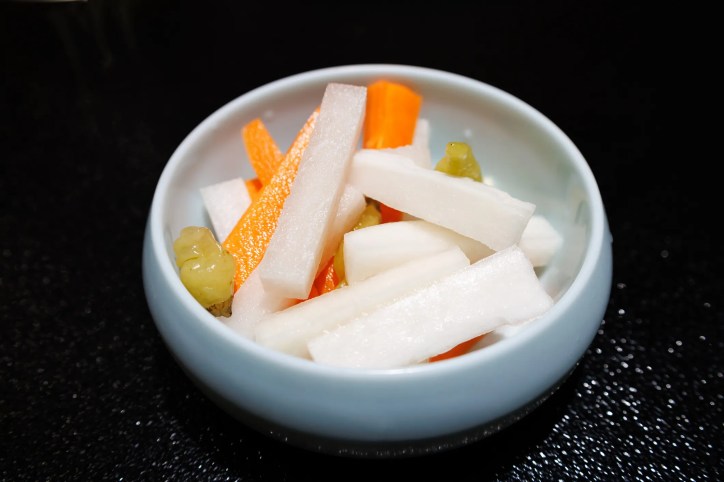Pao cai sells well all over the world, especially in countries and regions where it is regularly consumed, such as in China, Japan, Korea, and Europe. In 2018, the Sichuan pao cai industry had a market size exceeding 40 billion yuan, with an output value of 33 billion yuan. Because the market demand is enormous and the industry is experiencing a dramatic capacity expansion, there is a need to have a standard, unified guide that details product quality and safety guarantees. ISO 24220:2020—Pao cai (salted fermented vegetables) – Specification and test methods specifies the properties of pao cai, a traditional fermented vegetable product known for its rich nutrients like organic acids and amino acids.
What Is Pao Cai?
Especially popular in Sichuan cuisine, pao cai (salted fermented vegetables) is a traditional fermented vegetable product, rich in organic acids, amino acids, and other nutrients. Typical ingredients include vegetables like cabbage, carrots, radish, chili peppers, and long beans.
The fermentation process, which can last a few days to several weeks, involves submerging the vegetables in a brine made of salt, water, and sometimes spices (like Sichuan peppercorns, garlic, and ginger). This results in a distinguishable tangy, sour, slightly salty, and spicy flavor—often featuring an underlying hint of umami from the fermentation process. Pao cai is often served as a side dish, appetizer, or used in stir-fries, soups, and other cooked dishes.
What Is ISO 24220?
ISO 24220:2020 specifies the categories of pao cai (salted fermented vegetables) and its requirements, including sensory, physical and chemical, safety, labeling, transport, and storage. It also describes test methods for evaluating pao cai against specified requirements.
This international standard does not apply to kimchi.
Early History of Fermentation
Fermentation is one of the oldest food preservation methods, with evidence suggesting its use predates recorded history. In fact, the earliest evidence of fermented foods and beverages comes from Asia from around 8000 BCE. It is likely that the first product of fermentation was alcohol from fermented fruits.
Other evidence of a fermented alcoholic beverage made from fruit, honey, and rice dates back to 7000-6600 BCE in Neolithic China. The process of wine-making dates to around 6000 BCE in Georgia, in the Caucasus region. Around 4000 BCE, more sophisticated fermentation skills using cereals to make alcohol were developed, with beer being produced in Egypt and rice wine in northeast Asia. There is also strong evidence that people in Babylon were fermenting beverages around 3000 BCE.
Global Trade of Fermented Vegetables
Pao cai, a traditional fermented vegetable product originating from Asia with a history of over 3,000 years, was introduced into Europe in the 17th century. This introduction coincides with the expanding global trade and exchange of goods and ideas during that period. As food fermentation technology spread, particularly in the mid-1800s, different cultures began developing their own unique fermented vegetable dishes.
- Asia: Dishes like miso and kimchi are examples of fermented foods with deep roots in Asian culinary traditions.
- Europe: Sauerkraut, a fermented cabbage dish, has a long history in Eastern European cultures, with some theories suggesting it originated in China and was introduced to Europe during the Mongol invasion.
- Africa: Fermentation was also used to remove cyanide from cassava roots.
Today, fermented foods are undergoing a resurgence in popularity due to their potential health benefits and unique flavors. They are known for their probiotic properties and potential to improve gut health. Other potential benefits include improved digestion, boosted immunity, reduced inflammation, and even positive effects on mental health and weight management.
ISO 24220:2020—Pao cai (salted fermented vegetables) – Specification and test methods is available on the ANSI Webstore.
